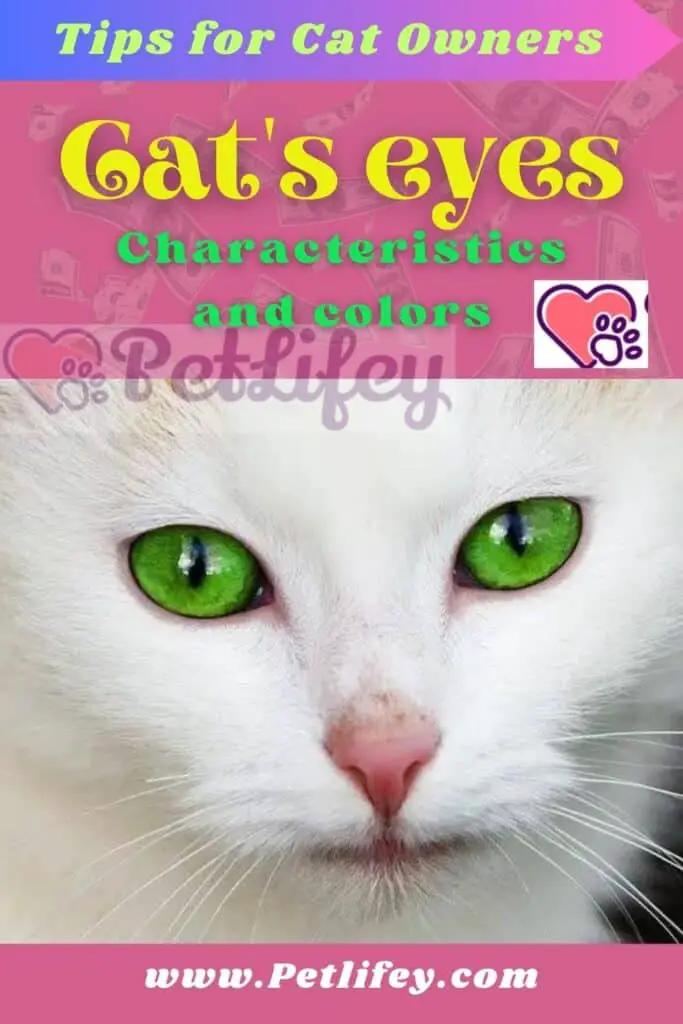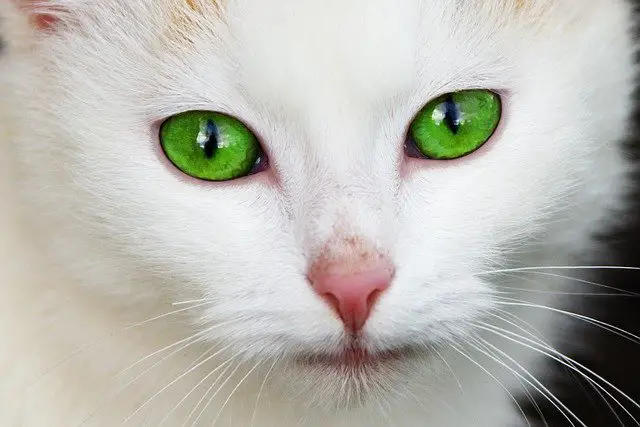
Eyes of the cat, one of the aspects that most strikes the first encounter with these cats. They are mysterious, insightful, deep and inscrutable. Immediately they make us understand that we are dealing with an intelligent animal that has no intention of being fooled, that perhaps wants to cheat us, certainly wants to do the facts of him, when he likes and if he wants. The cat’s eyes are also anatomically special, not only from the point of view of the gaze, so much so that they see even in the dark.
Cat’s eyes: anatomy
There are three concentric membranes of tissue inside the cat’s eyes. The external one is fibrous and is composed of the white sclera and the cornea. Then in the middle there is the vascular, thicker, composed of choroid, ciliary body and iris, finally inside there is the nerve membrane.
The pupil, located in the center of the iris, regulates the amount of light received by cats’ eyes, while the retina, which contains millions of receptors, is used to transmit images to the brain. Through this part of the eye, also through the optic nerve, it is possible to encode light energy into electrical signals and make them reach the brain which can convert them into images.
For the sake of completeness, it must be said that looking at the cat’s eyes there are also the conjunctiva, containing the blood vessels, above the white part, and the lacrimal gland that can only humidify.
Cat’s eyes: characteristics
Once the cat’s eyes have been dissected, we can observe them in their entirety by looking at the most significant characteristics starting from the position and size. Of the head, they occupy the central and upper part, they do not depend much on the breed of the cat even if there are exceptions. The Burmese, for example, has more protruding eyes than the average and even the Persian if you look closely at him. Other small differences can be noted in the opening of the eyelids.
Cat eyes: colors
We have already talked about the color of the cat’s eyes together with the hair, but the colors that the animal sees not yet. And it is by no means a trivial topic, especially if you think that the cat is first of all a predator, so all its senses are developed to be able to capture the prey, so first glance at it quickly.
We start from the retina to notice what makes the cat’s eyes special, because in it there are more rods than cones, the former are responsible for white and black, the cones of the conversion of light into colors. This explains why these felines are not very inclined to distinguish colors and this is not particularly important for their purposes.
Much better, however, to have a good view in times when there is little light: at sunrise and sunset, above all, time for “snack” and “breakfast”, that is hunting. In these hours of dim light the cat’s eyes are able to capture an enormous amount of light compared to us thanks to the pupil that dilates up to three times more than the human one. Nothing escapes the cat even in semi-shade.
Veiled cat eyes
If we notice the veiled eyes of the cat, it can be conjunctivitis, a rather frequent problem and which, if treated immediately, has no serious consequences. This disease can have an infectious or allergic origin, it manifests itself by making the cat’s eyes veiled, sometimes semi-closed or swollen. It can also be accompanied by mucus on the eyelids and itchy sensations. Unfortunately, conjunctivitis is also one of the symptoms in the case of poisoning.
Cat’s eyes: night glows
Another mystery related to the cat’s eyes, in addition to the sight in the dark, is that of their nocturnal glow. Anyone who hosts a feline at home knows what “a look into the dark” means, sometimes that he stares at you while you want to sleep and you can’t.
The fluorescence of the cat’s eyes is not voluntary, it is due to the tapetum lucidum placed behind the retina. Like a mirror, it reflects light on the sensors in the retina and makes the eyes shine as soon as they are hit by even a small amount of light. A feeling of searching gaze that we can well experience with this 24 cm tall plush with glitter eyes, for bedside table.







